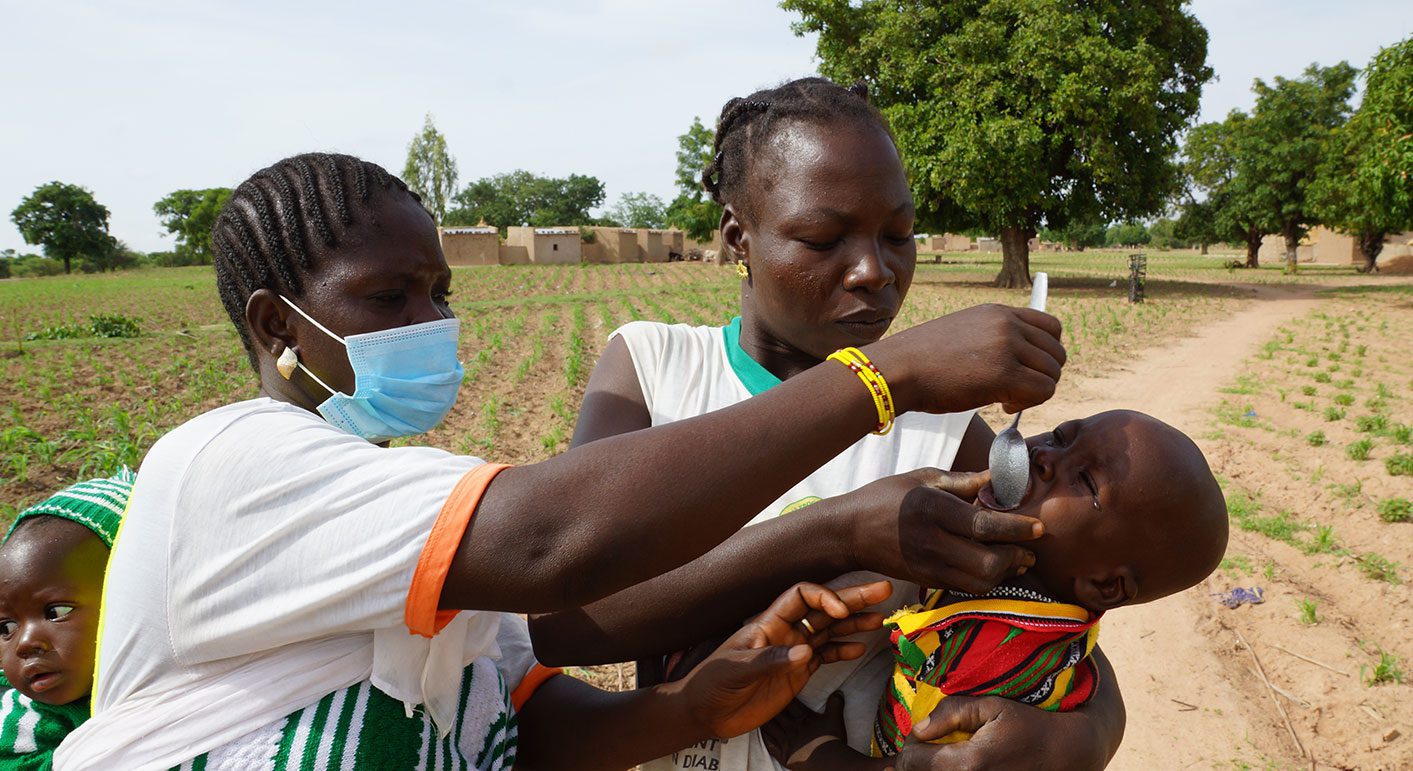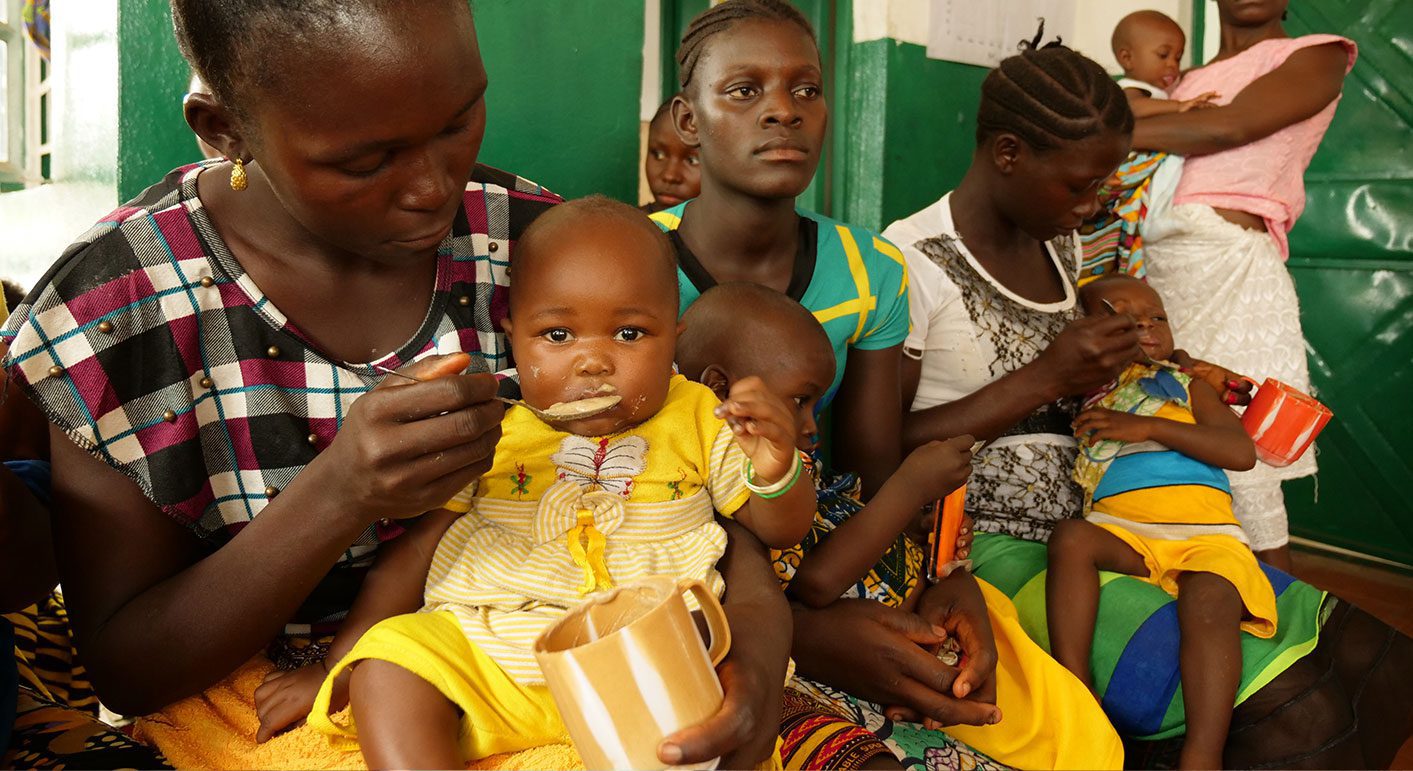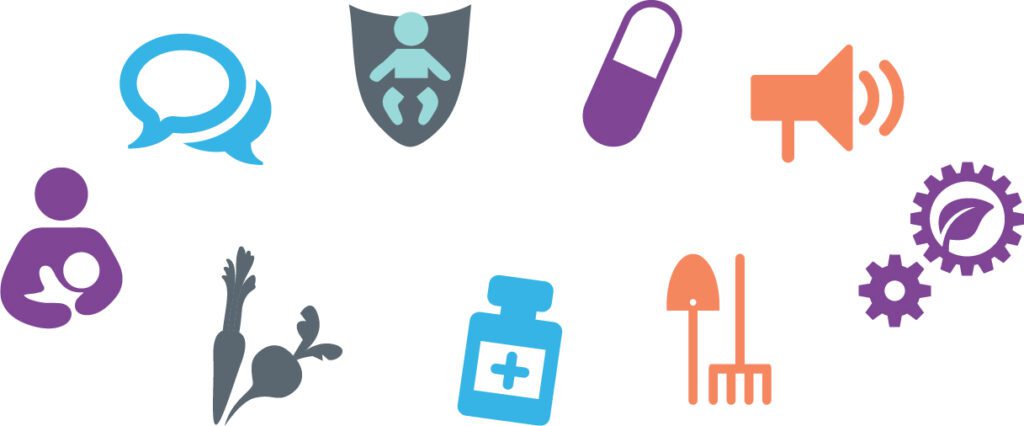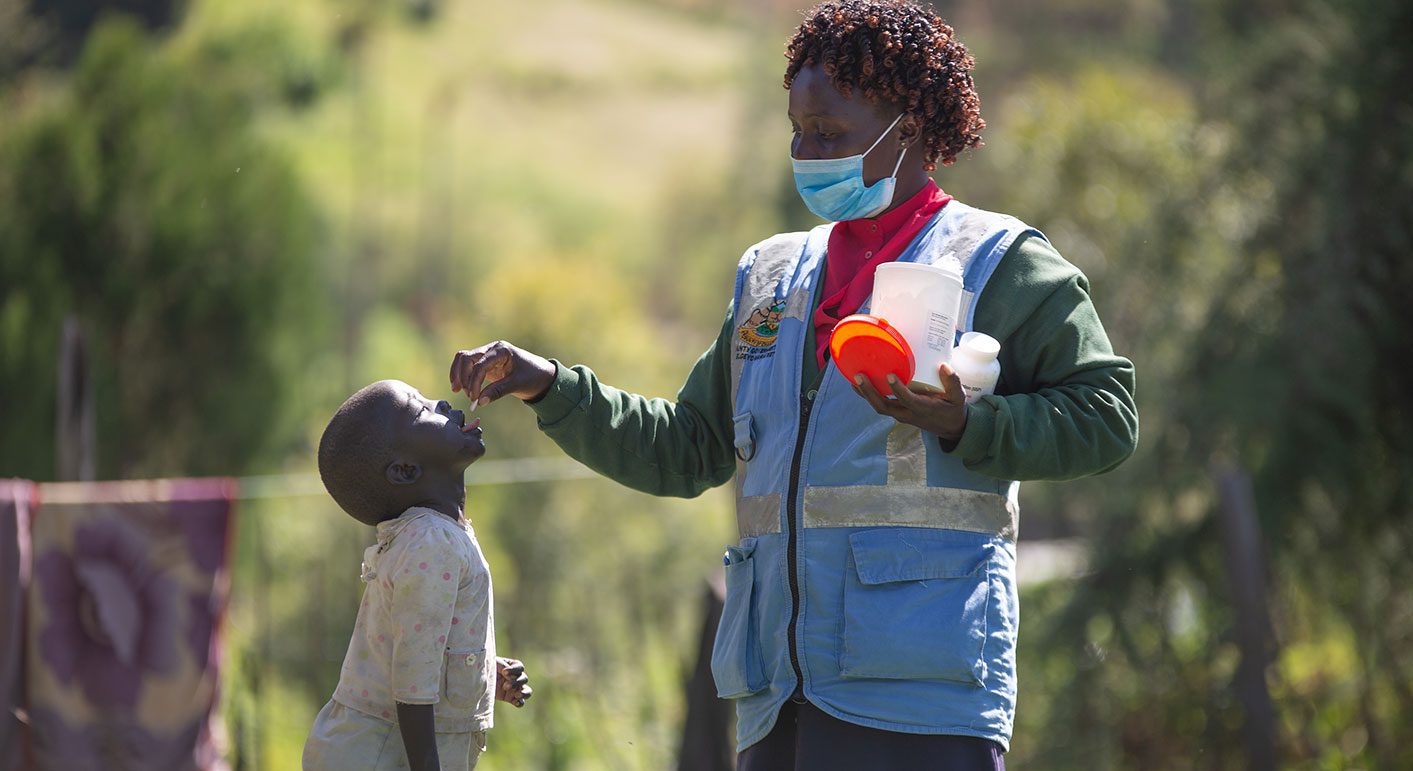Our Strategy to Help Children Survive Hunger and Malnutrition
Our Strategy to Help Children Survive Hunger and Malnutrition
In communities around the world that are struggling to overcome longstanding cycles of poverty, COVID-19, climate, and conflict have not only threatened lives and livelihoods, it has multiplied the number of children whose nutrition is compromised. There is a generation at risk.
We at Helen Keller Intl are seeing hunger unfold firsthand.

Children are most vulnerable to malnutrition and other deadly effects of poverty and deprivation. The first 1,000 days from pregnancy to a child’s second birthday is a critical time of rapid physical and cognitive development. Depriving babies and young children of nutritious food sets in motion a crisis that can follow them their whole lives, impacting their education, employment and ability to provide for their families.
Early in the pandemic, when country-wide lockdowns caused us to pause services, children were for months deprived of lifesaving vitamin A and medications that prevent diseases of poverty like intestinal worms and blinding trachoma.
Helen Keller’s teams are seeing the impact of these disruptions – children suffering from malaria and diarrhea who are not receiving the simple treatments that can save their lives and prevent them from falling into life-threatening acute malnutrition, known as wasting.
Women are also at high risk. When budgets are tight, families are forced to eliminate more expensive foods – the very same foods that are rich in essential nutrients, like iron and vitamin A. When a household faces food shortages, the mother is often the first to skip a meal. And pregnant and breastfeeding women have the most to lose; they need more nutrients, not fewer, to ensure a healthy child and to protect themselves during this vulnerable period.
Women are also the solution. They not only provide vital care to children; they often are the decision makers about the whole families’ medical care and nutrition. They consider how families’ income should be used. When women are part of designing programs, we often see that interventions and follow through are stronger. Women are at the heart of Helen Keller’s hunger interventions.
While COVID-19 is a lead driver in exacerbating malnutrition, its twin threat, the climate crisis, also threatens the very same communities where malnutrition is on the rise. Crop losses due to warming temperatures and volatile precipitation – whether severe drought or excessive flooding – are becoming catastrophic as they threaten communities living without a safety net, with no savings or food reserves and little means to rebuild. In Niger, for example, families already struggling to buy nutritious food are facing rising temperatures, rain, floods, and a growing season that is becoming shorter, making the hungry season longer.
The data are staggering.

- The World Bank has calculated that for every two deaths due to COVID-19, one child becomes an orphan.
- The Standing Together for Nutrition consortium, of which Helen Keller is a member, estimates that millions more households have fallen into extreme poverty and can no longer afford a nutritious diet, and that children in these households risk falling into life-threatening malnutrition.
- According to the World Food Programme and reported by The New York Times in August 2021, 270 million people facing life-threatening food shortages this year, compared to 150 million before the pandemic, an 80% increase in one year.
Key interventions

Helen Keller is tackling the hunger and malnutrition crisis with interventions that are, by and large, simple, affordable, and most importantly, effective:
- Support for breastfeeding mothers. Breast milk is a powerful immune-builder and an essential source of nourishment for the first two years of children’s lives.
- Diagnose and treat acute malnutrition of children who are at highest risk of death. Our community-based model ensures that children are diagnosed early and treated on the spot, rather than having to travel to a distant health center.
- Deliver vitamin A-rich foods and supplements to children under five years of age, helping to forestall vision loss and blindness and strengthen fragile immune systems.
- Provide education and tools for families to grow nutrient-rich foods that stave off illness and forestall hunger, plus bring the extras to market to build their livelihoods.
- Protect pregnant women by delivering vital multivitamins, especially for those who cannot afford a healthy diet. A combination of essential vitamins and minerals can reduce premature birth and low birthweight, which are especially dangerous where health systems are weak.
- Help families evolve gardening and farming as temperatures rise to adopt climate-smart techniques to grow nutrient-rich foods. Techniques to conserve water, protect soils, and avoid chemical pesticides and fertilizers support the growth of nutrient-rich foods.
- Improve food systems by prioritizing locally-adapted plant species that flourish without synthetic, and reduce dependencies on distant market chains that require excess packaging and long-distance transportation.
- Share our research to contribute to like-minded organizations’ learnings and best practices, helping the do their very best work. Over the years, we have contributed to the evidence that vitamin A saves lives; household farming improves family nutrition; and baby formula, breastmilk substitutes and sugary snacks are no substitute for breastmilk.
- Advocate for the world’s governments to make immediate and impactful investments to stop malnutrition in its tracks. We must leverage power structures to ensure the sweeping change necessary to help a generation at risk.
Helen Keller at work around the world

Helen Keller is deploying a model for treating acute malnutrition which puts lifesaving tools directly into the hands of community health workers and mothers, thus overcoming one of the biggest barriers to care: the distance to the nearest health facility, which, for some families, can be a day’s travel and lost wages or harvest. We tested this model successfully with communities in southern Senegal hard hit by COVID-related food insecurity and hope to expand to communities in Niger and Kenya as well as to South and East Asia.
In the south of Senegal where food insecurity is especially high, we are helping women’s groups use locally-sourced ingredients like millet, maize, sorghum, peanut, and cowpea (black-eyed pea) to produce a nutrient-rich flour to treat moderately malnourished children.
We are ensuring that children, pregnant women, and families have access to the food they need to survive and build good health from the inside out.
For example, in Cox’s Bazar, Bangladesh, where thousands of Rohingya people have taken refuge, COVID-19 has destroyed families’ ability to work. We provided food and cash to refugees and their hosts, to help both groups cope with this compounded emergency.
In Mozambique, we provided extra vegetable seeds to help families fill anticipated gaps in the local food supply. Seeds need time to grow, of course, but our early detection of a potential gap in locally grown food may have forestalled the rising nutrition crisis.
Helen Keller played a leading role in discovering the benefits of vitamin A more than three decades ago and has been a leader in distributing millions of vitamin A supplements ever since. After a pause of several months in the early days of the pandemic, we were able to resume distribution across nine countries of Africa. Vitamin A distribution continues, and we are evolving to help community health providers integrate vitamin A into routine health care visits for children.
In the remote Chittagong Hill Tracts of Bangladesh, we have introduced farmers to simple production technologies such as enriching soils with compost and worms and intercropping a more diverse selection of vegetables and fruits. These practices have boosted yields using less space, water and at lower cost – and, of course, enrich household diets. In the northeast division of Sylhet, Bangladesh, we tested a simple technique for converting household and crop waste into another valuable soil enhancer, biochar, by burning them in low-emission kilns. Our research showed that this natural fertilizer increased yields, was easy to use, and even resulted in “tastier” crops.
In Mali and Niger, we are identifying local nutrient-rich foods that can be transformed into products that are both profitable for small, women-owned businesses and affordable for low-income families. Cowpeas (black-eyed peas), for example, are a popular, protein- and iron-rich legume with potential for both increased yield and as an ingredient in a range of snacks and dishes for young children. Cowpeas also fix nitrogen in soils and thus provide nutrients for other healthier crops as well. By building local supply chains with women entrepreneurs, we are helping to avoid disruptions caused by distant market shutdowns, creating economic opportunities and keeping nutrition affordable for poor families.
In 20 countries, Helen Keller’s interventions are helping to stave off the worst of a hunger and malnutrition crisis, but we are painfully aware that there is much more, we, as a global community, must do.
You are part of the solution.
Thank you for your compassionate action on behalf of the world’s most vulnerable children and families.
Together, we are following in Helen Keller’s footprints. We take Helen’s encouragement to heart: “Alone we can do so little; together, we can do so much.”
As a global community of experts and caring, generous people, we can change the future for hungry children and families. Thank you for your generosity and for continuing Helen’s work.
